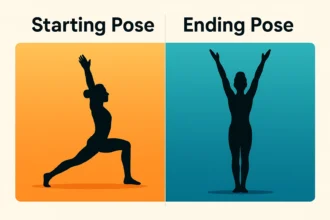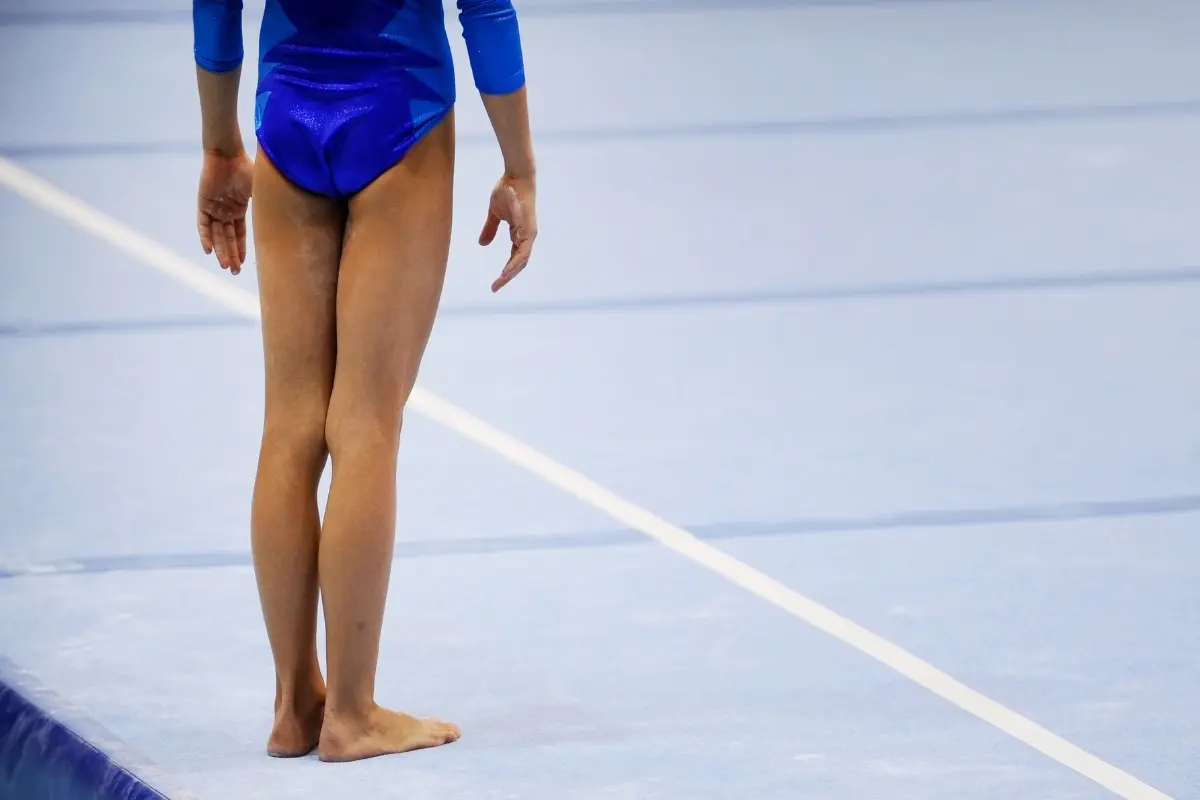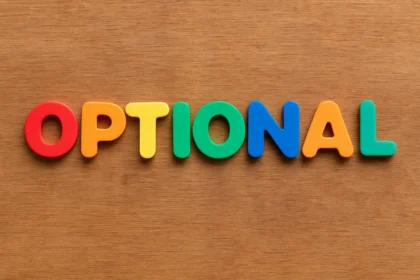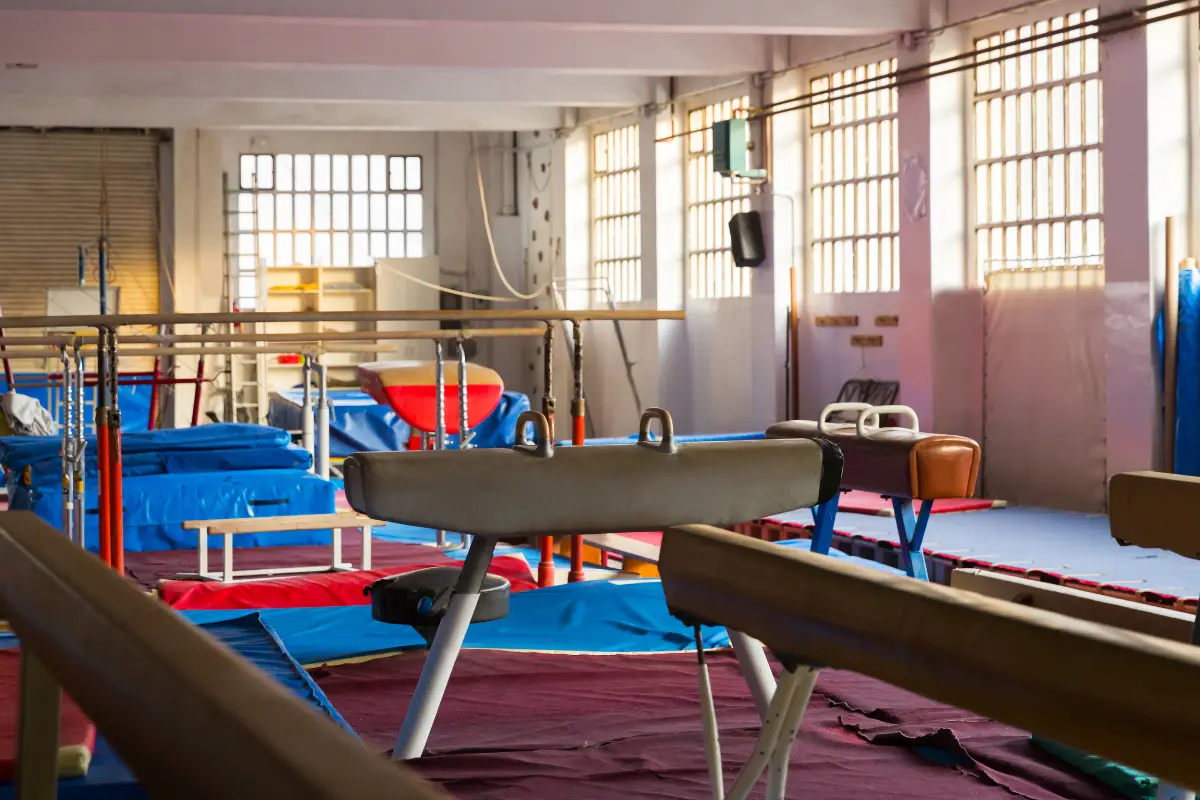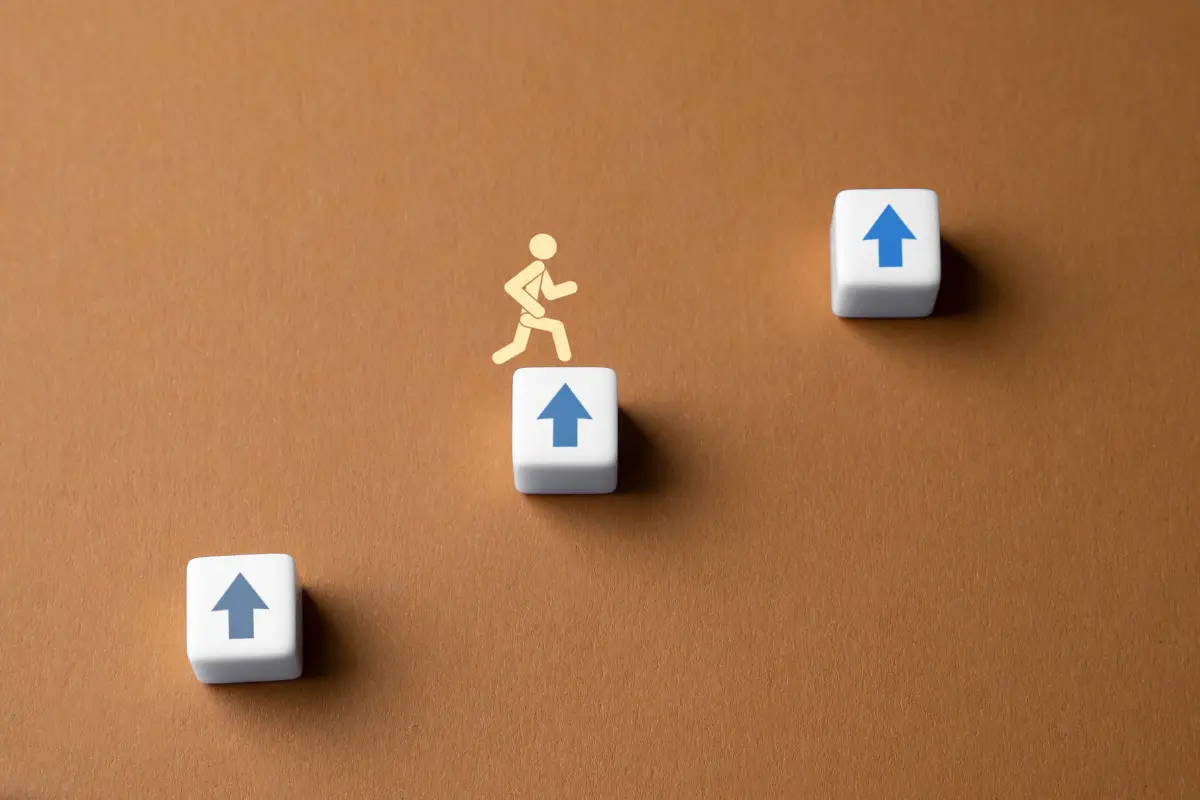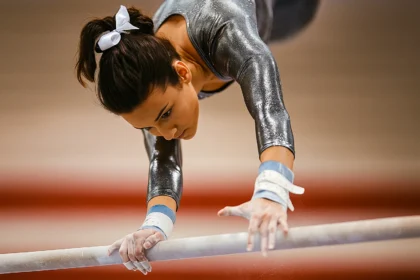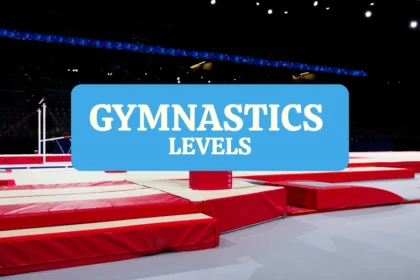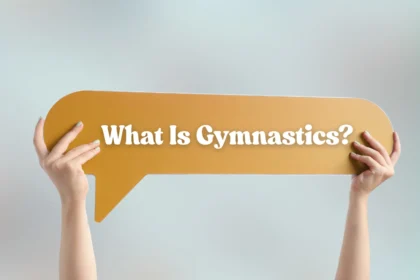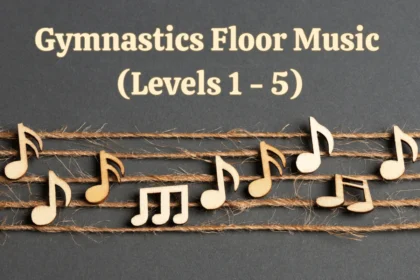Designing a gymnastics floor routine can be an exciting yet challenging task. A floor routine is a unique opportunity for gymnasts to showcase their athleticism, creativity, and personality, all while adhering to the technical requirements of the sport.
This guide will take you through the step-by-step process of creating a memorable routine that reflects your strengths and style.
Step 1: Understanding the Basics of a Floor Routine
A gymnastics floor routine is a performance that combines athletic skills with artistic movements, all choreographed to music.
The routine is performed on a spring floor that measures 12×12 meters (approximately 40×40 feet). The goal of a floor routine is to showcase a gymnast’s flexibility, strength, coordination, and creativity.
Key Components of a Floor Routine
- Dance Elements:
These include various leaps, jumps, turns, and expressive movements that give the routine its artistic flair. Dance elements are essential for connecting the more technical skills and providing the routine with rhythm and style.
- Tumbling Passes:
Tumbling involves acrobatic movements such as flips, twists, and somersaults. These skills are often performed in “passes,” where several tumbling moves are connected into one continuous series.
The difficulty of tumbling passes will depend on the gymnast’s level, with beginners sticking to simpler elements like cartwheels or round-offs, while more advanced gymnasts perform back handsprings and aerials.
- Acrobatic Skills:
In addition to tumbling, routines include single acrobatic elements like handstands, backbends, and rolls. These skills add variety and can be strategically placed to show off a gymnast’s strength and control.
- Artistry and Expression:
A floor routine isn’t just about performing tricks; it’s about engaging the audience and judges with expressive movements. Facial expressions, body language, and overall presentation are vital to scoring well. The performance should tell a story or convey a theme, making the routine more than just a series of athletic moves.
- Transitions:
Smooth transitions between elements are crucial. The routine should flow seamlessly from one skill to the next, avoiding any awkward pauses or breaks. These transitions help maintain the rhythm and keep the audience’s attention.
Routine Length and Requirements
- Time Limit: A floor routine generally lasts between 60 and 90 seconds, depending on the gymnast’s competitive level. For younger gymnasts or beginners, routines may be shorter, closer to the 60-second mark.
- Scoring Considerations: Judges evaluate floor routines based on difficulty, execution, artistry, and overall presentation. They look for clean lines, controlled movements, pointed toes, and proper form in each skill. Points may be deducted for hesitations, poor form, or lack of originality.
Level-Based Expectations
- Levels 1–3: Focus on basic skills such as forward rolls, cartwheels, handstands, and split jumps. The emphasis is on clean execution and proper technique rather than difficulty.
- Levels 4–5: Introduction of more complex skills like back walkovers, round-offs, and beginning tumbling passes (e.g., round-off back handspring). These levels begin to emphasize stronger dance elements and a smooth flow.
- Levels 6 and Above: Advanced tumbling skills are introduced, including multiple tumbling passes with flips and twists. Dance elements become more intricate, requiring a higher level of flexibility, strength, and musical interpretation.
Your routine must meet the requirements of your competitive level, and the difficulty of elements will increase as you advance.
Step 2: Choosing the Right Music
Music sets the tone for your floor routine and helps convey the energy and style you want to express. For younger gymnasts or beginners, it’s best to select music with a consistent tempo, simple rhythms, and an uplifting or fun vibe. Avoid overly complicated tracks that could distract from your performance.
When selecting music:
- Ensure it has no lyrics if you’re competing in a gymnastics competition, as most regulations prohibit lyrics.
- Choose music that matches your personality. If you prefer something energetic, go for upbeat tracks. If you are graceful, a softer, more classical piece may suit you.
- Time the music to fit within the routine’s required length. Typically, routines need to fit within 60-90 seconds depending on your competition level.
Step 3: Identify Your Strengths and Style
Every gymnast has their unique strengths. Maybe you excel at tumbling, or perhaps your dance and flexibility are your standout qualities. When choreographing your routine, it’s essential to showcase what you do best. Focus on your strongest skills to leave a lasting impression on the judges and audience.
If you’re more powerful with tumbling, emphasize a strong pass or two. If you’re particularly flexible, incorporate elements like splits or backbends into your routine. You should also consider your body’s capabilities — don’t overload your routine with elements that will tire you out too quickly.
Step 4: Choreographing Your Dance and Movement
The dance component of your floor routine connects your tumbling passes and leaps, giving the routine its artistic flow. Gymnastics is as much about grace and presentation as it is about athleticism, so the dance portion is your chance to shine.
When choreographing:
- Use movements that match the music. For example, if you chose an energetic song, fast and dynamic movements will look best.
- Incorporate a variety of levels. Use high leaps, low slides, and turns to add visual interest to the routine.
- Ensure smooth transitions between tumbling passes and dance elements. The routine should feel cohesive rather than a series of disjointed moves.
- Remember to smile and express emotion throughout your performance. Judges often score based on how well you engage with the music and audience.
Step 5: Tumbling Passes and Acrobatic Elements
Tumbling is one of the key components of any floor routine. Beginner routines may include simpler skills like forward rolls, handstands, and round-offs, while more advanced gymnasts may perform back handsprings, aerials, or more difficult tumbling passes.
For beginners:
- Focus on clean execution rather than complexity. It’s better to have a perfectly executed forward roll than a sloppy back handspring.
- Practice combinations like a round-off into a backward roll to keep the momentum of your routine flowing.
For more advanced gymnasts:
- Aim to perform at least two solid tumbling passes.
- Make sure your tumbling runs are well-spaced throughout your routine. Start strong with a good pass, but save some energy for another tumbling element later in the routine.
Step 6: Add Leaps, Jumps, and Spins
Leaps, jumps, and turns add an extra layer of artistry to your floor routine. These elements help break up the tumbling passes while adding variety and rhythm to the performance.
- Start with simple leaps like split jumps and tuck jumps if you’re a beginner. As you progress, you can incorporate more advanced jumps like straddle jumps or wolf jumps.
- Spins can be added for artistic flair. Beginners can start with simple half or full turns, while advanced gymnasts may perform multiple spin combinations.
Step 7: Perfect Your Routine Through Practice
Once your floor routine is choreographed, practice is key to perfecting it. Break down the routine into smaller sections to focus on improving individual components, such as tumbling, dance, and transitions. Once you’re confident with each section, start running through the entire routine in sequence.
Here are some tips to make your practice effective:
- Work on cleaning up your movements and maintaining good form throughout the routine.
- Practice endurance by performing the full routine multiple times. Make sure you have enough stamina to finish strong.
- Pay attention to details like hand placement, toe pointing, and overall body lines.
Step 8: Seek Feedback and Make Adjustments
It’s important to get feedback from coaches or experienced gymnasts on your floor routine. They can help you identify areas that need improvement, offer suggestions on better transitions, or suggest how to highlight your strengths more effectively.
Be open to making adjustments based on their feedback. Even small changes can improve your performance dramatically, whether it’s timing, flow, or refining a particular skill.
Step 9: Perform with Confidence
When the day of competition arrives, the key to a successful performance is confidence. Trust in the work you’ve put into choreographing and practicing your routine. Remember to smile, stay engaged with the music, and keep a positive attitude even if you make small mistakes.
Performing with energy and confidence will leave a lasting impression on both the judges and the audience.
In conclusion, crafting your first gymnastics floor routine is a rewarding experience that allows you to express your creativity while showcasing your athletic abilities. Keep practicing, seek feedback, and most importantly, enjoy the process of creating something special.



